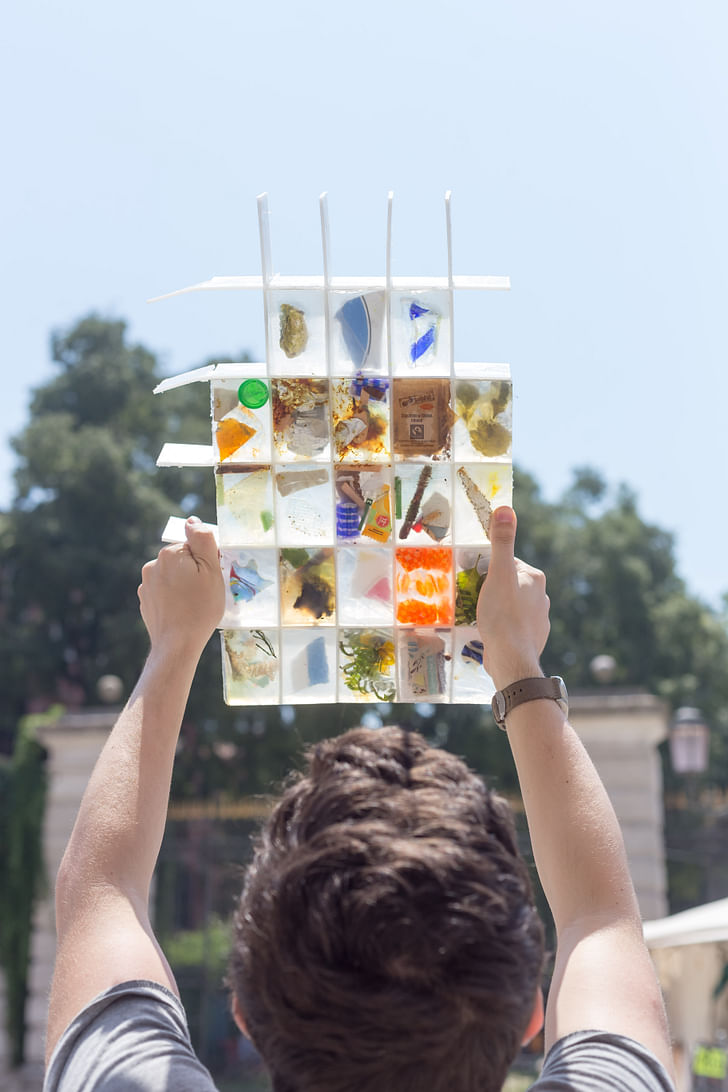

Earlier this month, we featured the first week of events from the Venice Biennale's Swamp School: Swamp Radio, a series of acoustic space explorations, radio experiments, environmental sound recordings and data sonification.
Futurity Island, the Swamp School's second week of events, was held from June 25th to the 30th. It provided its participants with a space and a series of field trips to speculate on urban and material futures and imagine radically new forms of inderdisciplinarity. Given the recent news of Miami's precarious fate as well as that of other coastal cities and islands, the discussions that took place seemed especially apt.
Given the urgency of collective response, the organizers of the Swamp School, Gediminas Urbonas and Nomeda Urbonas, intended to inspire a single question among its participants: "how can we co-live with the swamp?"
The week began with a lecture from the Lithuanian philosopher Kristupas Sabolius, who presented highlights from his essay, "Swamps and Islands." His lecture challenged the conventional methods by which the collective public talks about 'the future.' "[It is described as] a place," he argued, "a defined location, which is better than ours." The popular imagination of the island has been closely linked to the concept of Utopia, Sabolius argued. Islands are places to project fantasies, such that "the geography of a utopian island is manipulatable, as well as conceivable at a glance; it is contained within its limits and it is is almost transportable as an architectural model or pavilion."

Citizen Sensing and Environmental Practice, by Jennifer Gabrys. Courtesy of Citizen Sense and Jennifer Gabrys
The following day, University of London professor Jennifer Gabrys presented highlights from her most recent research project: the Phyto-Sensor Toolkit. Much like the work showcased and experimented with during Swamp Radio, Gabrys began her presentation with 'environmental sensors:' digital instruments capable of measuring pollution and other environmental disturbances. The instructions for constructing her most recent version of this sensing technology are available online. Designed to be used in a number of outdoor environments, the Phyto-sensor toolkit suggests plans for improving and monitoring air quality in gardens through plants that respond to air pollutants.
Anthroposcenarium, by Nikola Bojić. Photo by Gediminas Urbonas
Nikola Bojić presented key illustrations from his forthcoming book: Anthroposcenarium: Symptoms Systematization of the Human Environment. The book is a reinterpretation of the materials presented in a 1971 study on the systematization of the human environment that did not contain a single mathematical model (unlike The Limits to Growth, the relatively successful statistical research paper published in the same year). "Rather," Bojić explains, "it was articulated as a system of cybernetic ally linked theoretical models, organized as a discursive device to trigger speculative imaginations beyond the pre-programmed algorithmic realms." The next step in human evolution imagined by the study, Homo Effluvien (pictured above), was based on such theoretical models as opposed to 'rational' mathematical models of evolutionary projection.
Salicornia Europaea, by Thomas Pausz. Photo by Norbert Tukaj.
The French artist and professor Thomas Pausz cooked a special plant for his audience: Salicornia Europaea, an archaic plant often found on the shores of Venice. While the audience ate the seasoned plant, Pausz elaborated on its integral history in the city: it offered the glass artisans of Murano a local alternative, for example, to soda ash, an important component in glassmaking. The versatility of the plant was proposed as a metaphor for how we must appropriate local materials in an era of excessive importing and exporting.
Swampification, by Lorena Bello and Brent D. Ryan. Photo by Norbert Tukaj.
Lorena Bello and Brent D. Ryan, two professors of architecture and urban design at the Massachusetts Institute of Technology (MIT), exhibited their project Swampification, which prompted its participants to envision a new future for swamplands in the 21st century's Global South. They compared the ecology of Venice with that of Cartagena de Indias, Colombia, where biodiverse swamps are continuously being invaded by impoverished people fleeing from the violence that drug cartels and FARC militia have imposed in Colombia’s countryside for decades. Given the current socio-ecological-political conflict’s links to informal urbanization processes built on swamplands like Cartagena, Bello and Ryan asked the audience to imagine new potentials through the imagination of three swamp islands: a political island (or lazaretto) serving as transitional heterotopia for the FARC, an ecological island that seeks to improve the relationship between biodiversity and humans while diminishing risk, and an economical island in the swamp that shifts the ecological discourse from 'useless' to 'useful' to increase resilience.

Venetian Soap - Entropic Souvenir, by Thuy Le, Antonio Moya-Latorre, Shane Reiner-Roth and Indrani Saha. Photo by Norbert Tukaj.
On the final day of the Futurity Island series, I presented a project devised by myself and three other students (Thuy Le, Antonio Moya-Latorre and Indrani Saha) that had participated in an art studio taught by Gediminas Urbonas and Nomeda Urbonas in the Art, Culture and Technology program at MIT. I began with a short text concerning the destructive relationship between tourism and environmental devastation. "Tourism is the lifeblood and intoxicant of Venice," I began. "Like many other islands, Venice thrives on the foot traffic that erodes the ground beneath it." I then invited the audience to add the trash they had accumulated during their stay in Venice to individual bars of soap. The contaminated soap bars reflected the environmental toll international tourism can take, particularly on the world's islands, whose economies ironically rely on that tourism.
Venetian Soap - Entropic Souvenir, by Thuy Le, Antonio Moya-Latorre, Shane Reiner-Roth and Indrani Saha. Photo by Shane Reiner-Roth.
No Comments
Block this user
Are you sure you want to block this user and hide all related comments throughout the site?
Archinect
This is your first comment on Archinect. Your comment will be visible once approved.